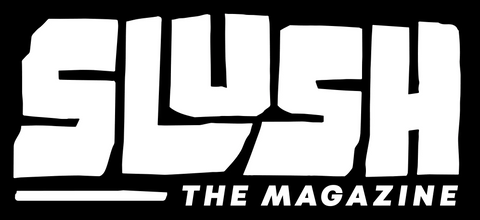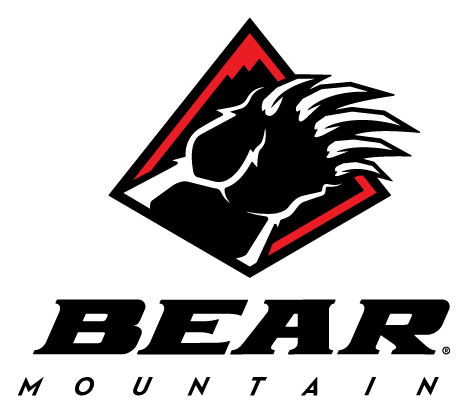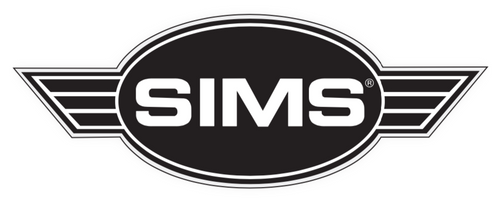
When Mike Hatchett first picked up a film camera and focused it on someone descending the slopes sideways, odds are that he had no idea he would be spending the next three decades actively adding to the highlight reel of snowboarding history. Since getting that first roll of film processed, Mike, alongside his brother Dave, has documented countless first descents and NBDs and released more than a dozen movies and hundreds of segments under the Standard Films banner. This cannon would inform, inspire, and entertain millions of devout devourers of snowboarding culture and, true to their brand, would consistently set the “standard” for cutting-edge action and image capture. Kazuhiro Kokubo, Halldor Helgason, Torstein Horgmo, Terje Haakonsen, Travis Parker, John Jackson, Jeremy Jones, Victoria Jealouse, Peter Line, Daniel Franck, Jim Rippey, Jamie Lynn; the list of legends who’ve appeared in front of Mike’s lens is as long as it is esteemed.
After a 10-year hiatus, Mike has returned to shred cinema as the director of Flying High Again, collabing with Teton Gravity Research on their ninth snowboard film.
What led you to return to making snowboard films with the upcoming TGR release, Flying High Again?
The opportunity came out of the blue. Todd and Steve Jones from Teton Gravity Research called me up and asked if I wanted to direct another snowboard film. I first met Todd and Steve in Alaska, when we were making TB5. Todd and Steve were actually our guides at Valdez Heli-Ski. It was Johann Olofsson, Victoria Jealouse, and Dave Downing. That was for Johann’s epic TB5 part, and we pretty much hit it off right off the bat. We all had good chemistry, and we’ve been friends ever since. As the years went by, I started doing work for them off and on for different projects, and we would trade footage. I'd shoot Doug Coombs on skis in Alaska, and they would shoot a lot of our Jeremy Jones stuff, and we would just trade shots.
After I stopped doing Standard Films, I directed a show for TGR called Locals that was on Outside TV for five seasons. I'd also do some random day-rate filming or go on a shoot for them as a cinematographer for a few weeks.

While this is TGR’s first ensemble-based snowboarding feature, they’ve been showcasing riders in their ski films for decades, as well as producing their brother Jeremy’s Deeper, Further and Higher trilogy. Few people realize that some of the earliest footage of Travis Rice on film was in TGR films, and Jeremy and Johan shared the ender of their 2001 release Mind The Addiction.
They've highlighted snowboarding probably longer than most of the snowboard film companies have even been around.
What is the draw for you to get back into it?
It's probably two things for me. One is I really like working with TGR. I have a lot of respect for Todd and Steve because they're just homies, and I like the way they run their company. Two is just getting back into snowboarding. I love riding, and I love filmmaking. To be able to get back in the mix doing that is a total stoker for me. I've basically taken 10 years off from directing or producing snowboard films. I've shot a little bit in that time, but up until now, I haven't had an opportunity to direct and produce again, and that's also one of my passions. I really love driving the ship and all the stuff that goes into moviemaking from start to finish. I love the process.
What do you see as the biggest change in filmmaking from the Standard Film days to today?
Social media for one and the viewing experience. There is just so much more video on Instagram with instant gratification. People just want to watch shorter clips. Also, filmmaking in general, has advanced so far. In our last Standard Film 2112 in 2012, we were starting to use drones, but they were the bigger six-foot wingspan helicopters that could basically chop your head off. So, the tools have changed. Stabilization in GoPros. Stabilization with gimbals. FPV drones. Red cameras have advanced so much with frame rates and resolution. Now we can get 120 frames per second, 240 frames per second! We didn't have that stuff at our fingertips back in the day. When we made our first movies more than 30 years ago, there were no helmet cams. We had a 16mm camera, two wide-angle lenses, a single zoom lens, and that was all. If you rewind the clock, a lot of filmmakers wouldn't have had the same opportunities that they have today. A producer or director wouldn't have been able to afford to buy a 16mm camera, process the film, pay for the transfer, and get it out to the world. Now, virtually anyone with some motivation can grab a camera and go do it. It's impressive to see how much talent is out there now. But there's also just a lot of BS out there, a lot of just disposable stuff that isn’t worthy of being posted.
Today, digital cameras has so much have so much more functionality, as well as the ability to instantly play a clip back to see if you got the shot or need another try. Does this change your process, and do you think having a background in film gives you an advantage?
It totally gives me an advantage behind the camera. With film, you couldn't make mistakes; you always had to nail it. You also had to really think about what you were shooting. Even though I now have the confidence going into any situation knowing that I can just watch the shot back, I still have a mental checklist in my head that I go through for every shot. I'm like, "Focus, F stop, is my tripod stable?" to this day. Same with the shot itself. For instance, I’ll think to myself, "I'm going to slowly push in as John Jackson's coming to the lip of this gap. And right as he leaves the lip, I'm going to finish my push. He's going to go backside seven over this gap, and then he's going to land here and go out of frame there." On the flip side, you can tell when a filmer is just pointing and shooting. I think about all these things when I film to try and get the shot the best I can.
Meaning you can tell when someone locks off a shot wide and then in post-production, will pull in and track the action as opposed to manually crafting the clip in the moment.
You notice the difference. I try to tell my filmers to shoot it how they see it edited into the final movie. If you think it's going to be a real-time shot in the movie, shoot it in real-time. If you think you'll want to zoom in as the guy's going off the lip or zoom out, do that move? Shoot it like you want to see it in the finished product, and I think it's going to be a better end result. It's also going to be less work for the editor. If you look at a Mack Dawg, Absinthe, or Standard movie, there's a magic to 16mm.

Who are the riders on the Flying High Again roster?
We have John Jackson, Bode Merrill, Jason Robinson, Elena Hight, Danny Davis, Brandon Davis, Jeremy Jones, Nick Russell, Antti Autti, Dusty Henricksen, Sean Fitzsimons, and a few more.

What is your takeaway from working with that crew?
I feel good about the chemistry. You’ve got veteran riders like Bode Merrill, Jason Robinson, John Jackson, Jeremy Jones, Danny Davis, and then new guys, including Sean Fitzsimons, Dusty Henricksen, and Brandon Davis. I like the mix.
When you were out there with the crew, what was the back and forth like? I imagine there were no shortage of opportunities to dispense some wisdom.
With Bode Merrill, I was more or less following his lead because I was in a lot of his zones in Utah and in Jackson Hole. In those situations, my experience came into play in where I would set up, how I would film a shot, and the things I would capture. I've worked with John Jackson so much that it's just easy with him. We know exactly what's going on. Where I feel the most comfortable is Alaska, where I keep the crew tight and make good decisions. There's just something about Alaska that clicks for me. It could be where I'm going to set up on a Barbie angle, or it could be when we're going to shoot a drone shot. It could be just navigating to keep the heli close and tight. When you have a private helicopter, and you're getting charged literally by the minute, you can burn your hobbs hours so fast. You need to know what's the light like in the morning. What's the light like in the afternoon? What's our objective? Where are we going to shoot from? How are we going to shoot it? Also, knowing the riders you're with their ability level and what will be the most productive. There's something about filming in Alaska that feels like second nature to me. Even though I took a few years off, when I went back out there and did it again, I was like, "Oh, I feel like I'm home."

What have you watched lately that you were really stoked on?
I was inspired by Learning to Drown, the Jess Kimura movie. I was inspired by the filmmaking, the storytelling. The way the story arc was put together with driving down to Mexico created this through line that kept you engaged from start to finish and drew you in. That was very impressive to me. And then Ark last year really impressed me from a riding standpoint. Gabe Langlois’s filming in Whistler is super on point and has some of the best shooting I've seen in a while.
While filmmakers always create movies for big screens and theaters, the fact of the matter is that from VHS to DVDs to social media with smartphones, the screens where snowboarding films are most widely seen have gotten smaller. It must be exciting to know that the theater-style premiere tour is a huge part of the Flying High Again rollout.
I'm excited to get it in theaters for the big-screen experience alone. I’m also looking forward to getting the snowboard community together and keeping the stoke going. For many of the younger generation don’t know what it was like to go to a Mack Dawg or Standard premiere down at Spreckels Theater in San Diego, for instance, when over a thousand people were standing up in their seats screaming when Peter Line landed some gnarly trick or something. I am stoked to bring the community together for an experience and get everyone pumped up, hooting, hollering, and having a night of partying and fun together. That's the best way to experience this movie, in my opinion.



















